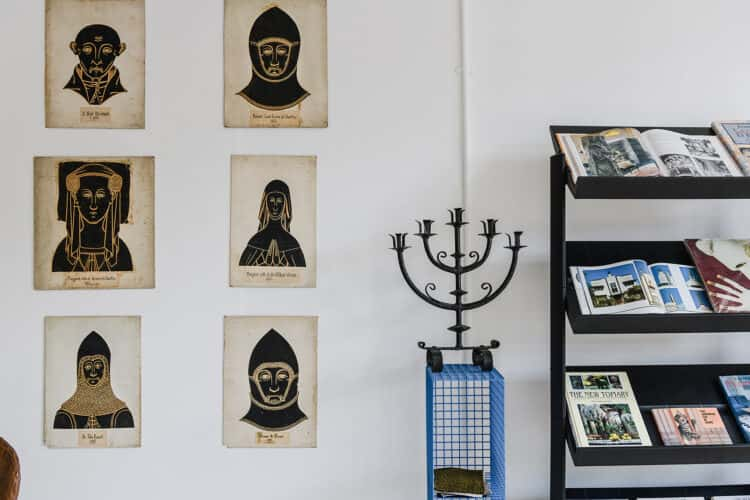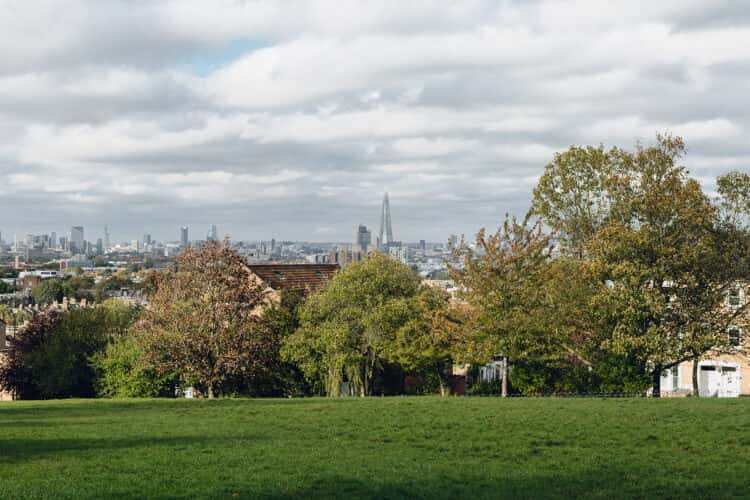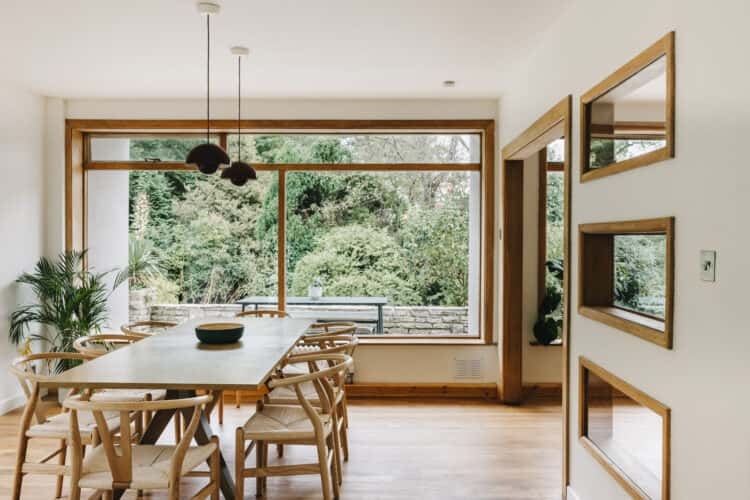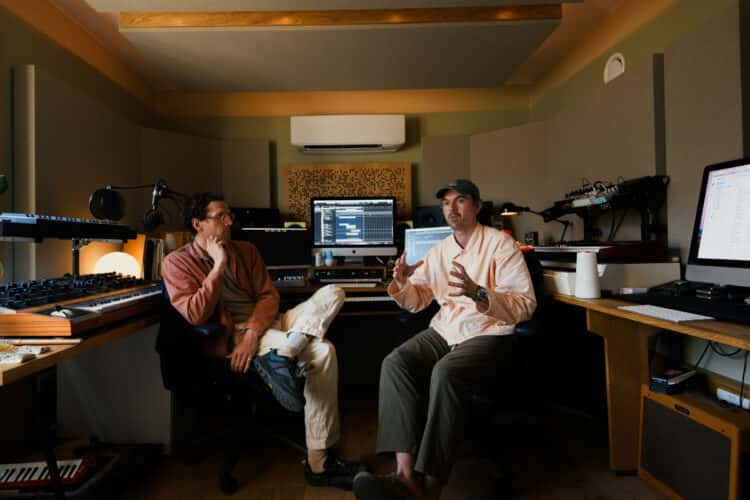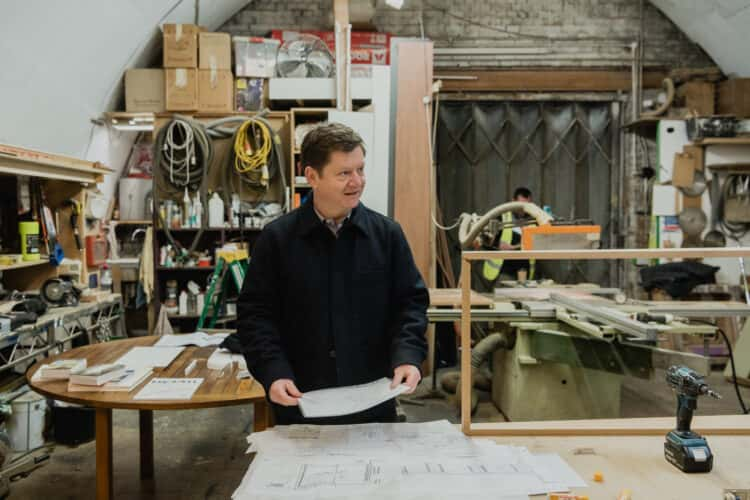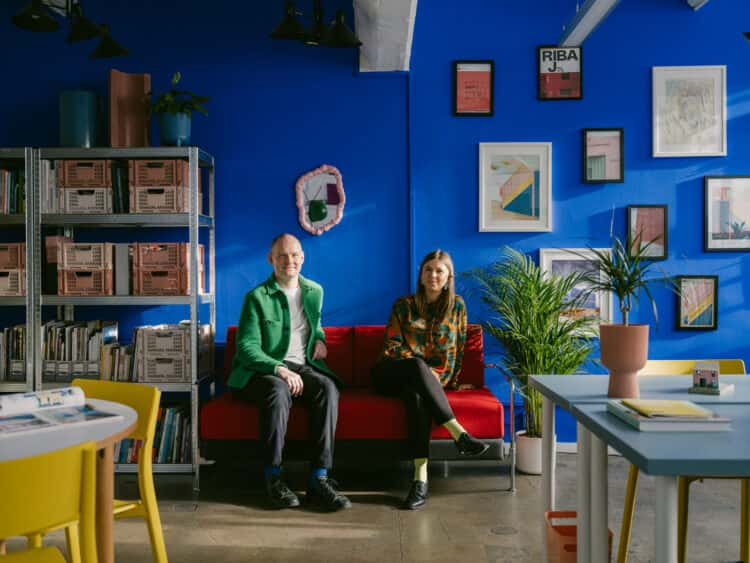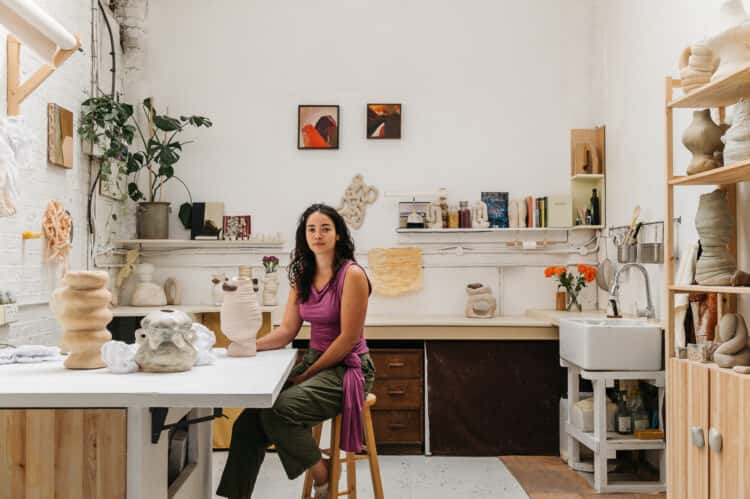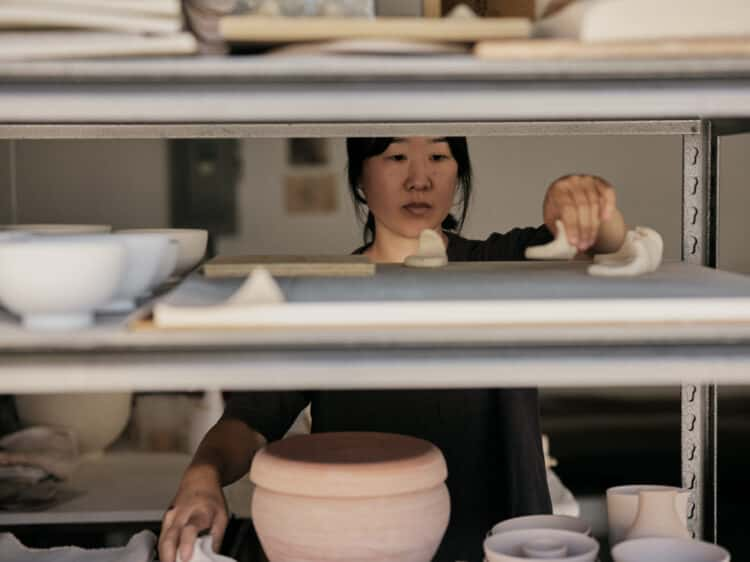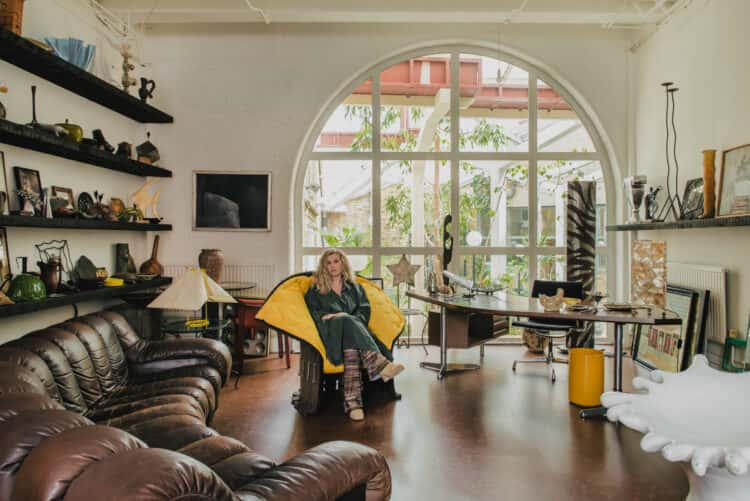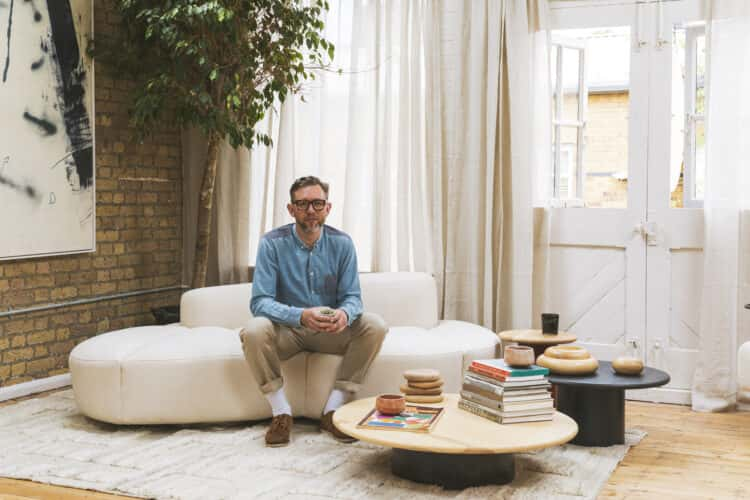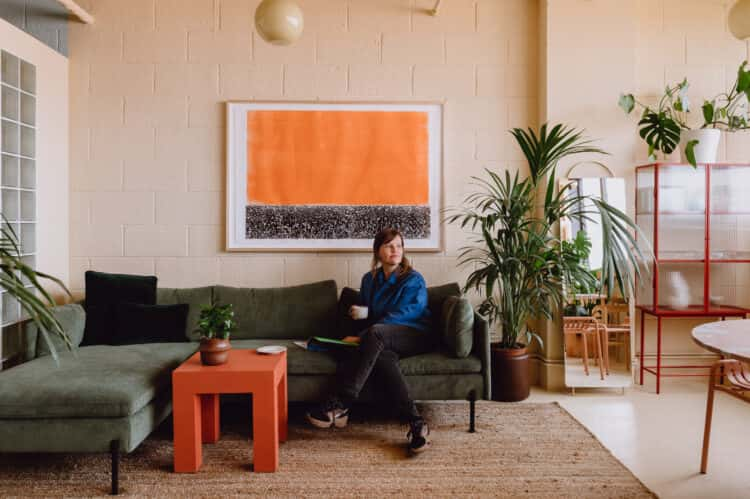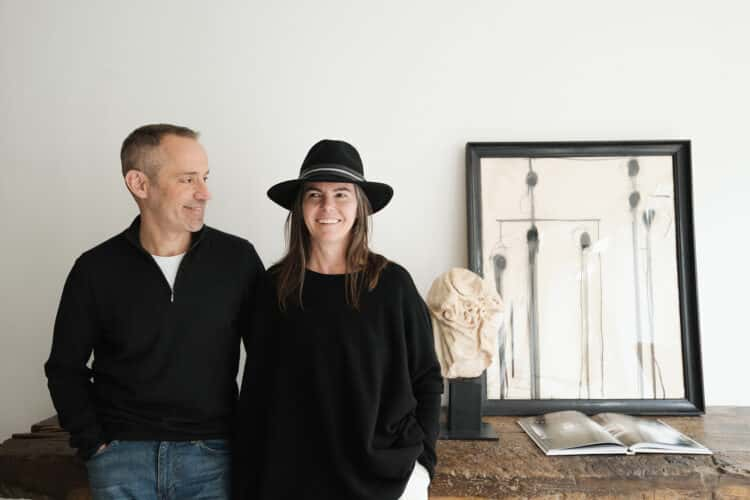Steffan Davies on collecting, curating and the beauty of contrasts at Steffan Studio in Battersea, south-west London
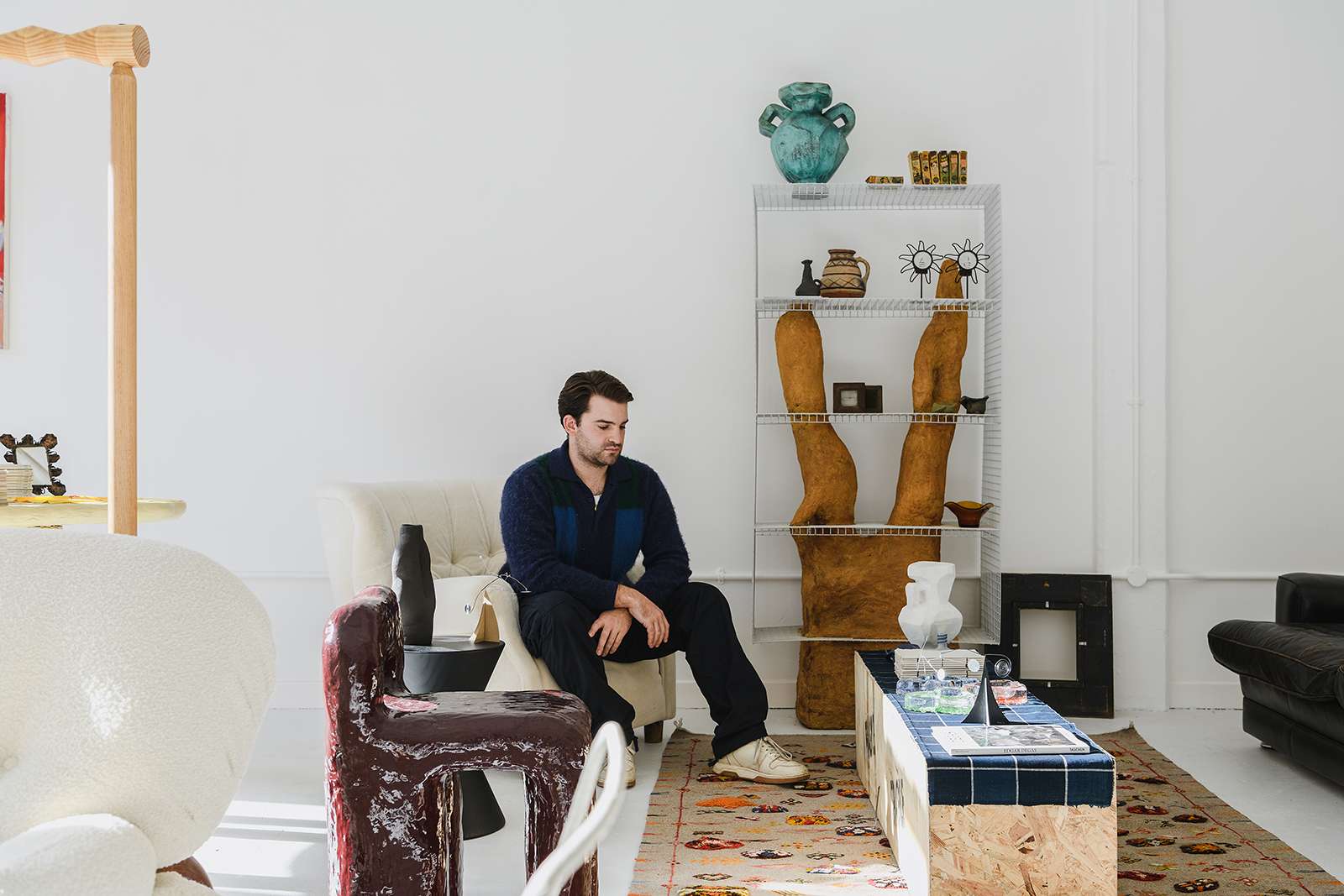
Words Billie Brand
Photography Elliot Sheppard
Steffan grew up in a creative household in Wales. His mother was always making clothes; his father was a creative thinker – and Steffan is a culmination of the two. His brand is his universe: what started on the Instagram account @steffan, where he posts provocative, inspirational images that invite comments from his many followers, has fruitfully evolved into the shoppable studio where we stand today. Both these things are a by-product of Steffan being a fanatical collector for as long as he can remember: images, books, 50p pieces, plastic bags, whatever catches his eye. As he shows us around, Steffan tells us about his eclectic aesthetic, finding unusual images for Instagram and his favourite objects in the space.
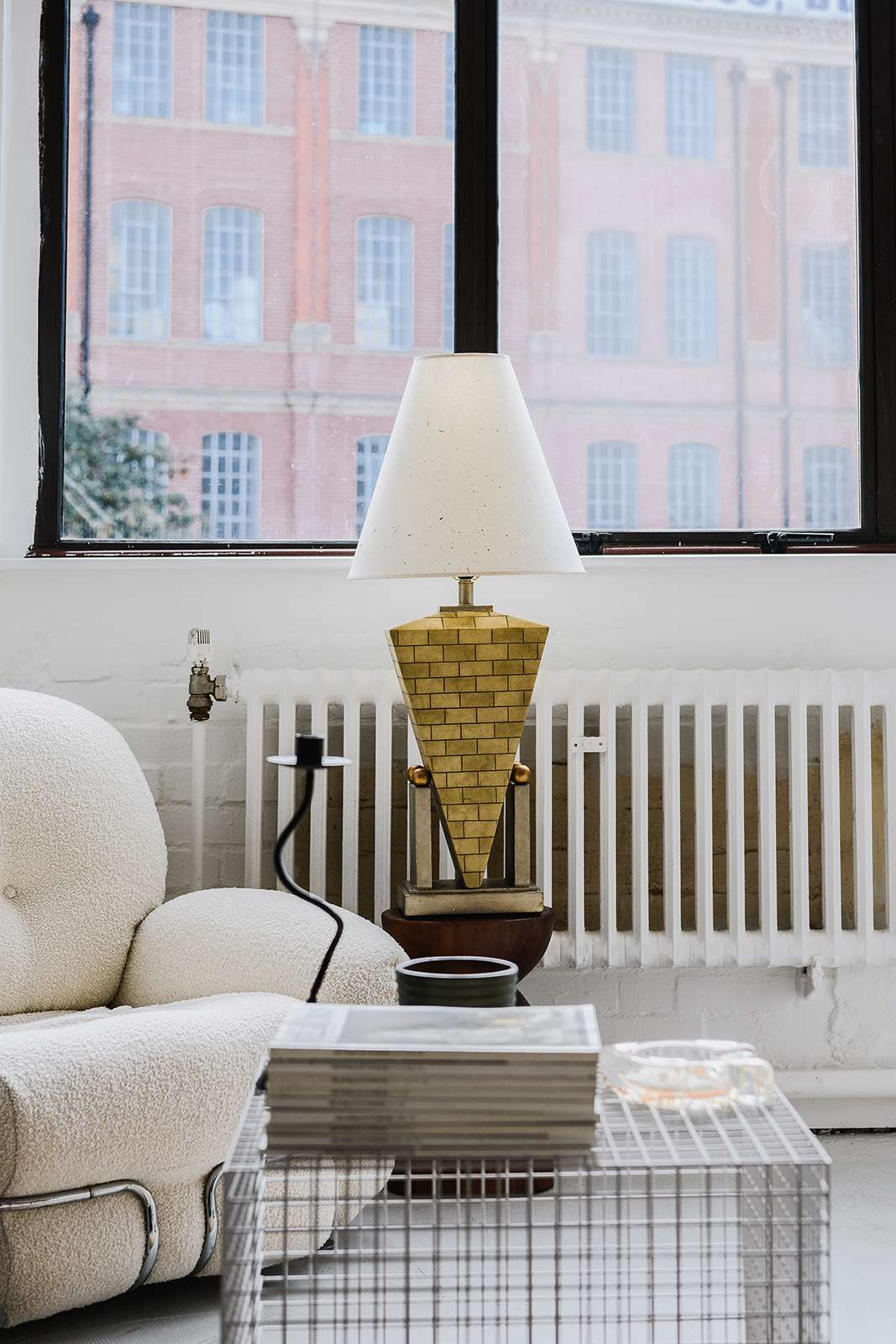
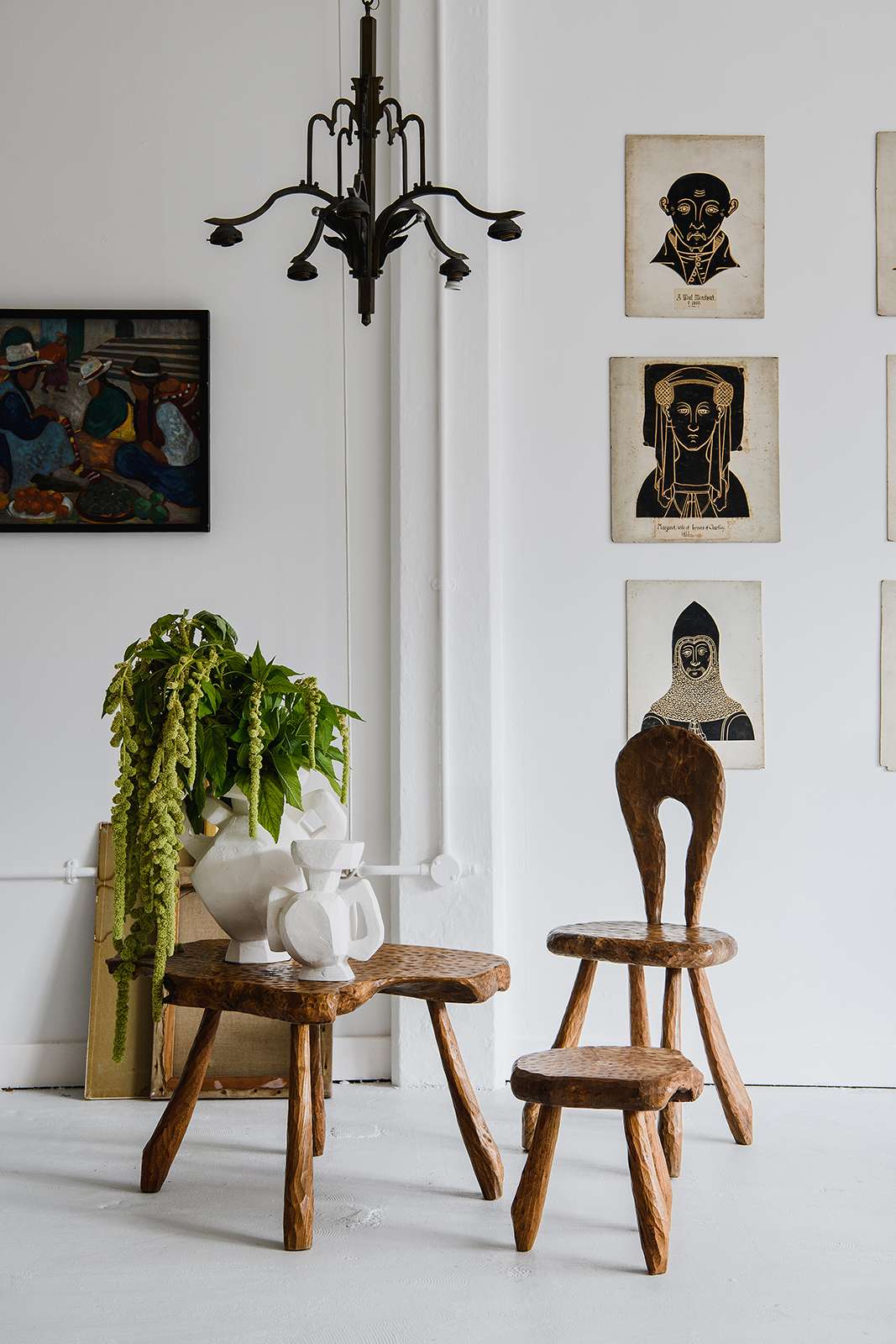
Steffan: “I’ve always been a collector. I’ve got all sorts – from 50p pieces to plastic bags to model cars. I collect books extensively. It doesn’t take much to get my attention and get me excited. I get quite compulsive about things – I really like the feeling of having more.
“I think of what I do at Steffan Studio as collecting rather than sourcing. Nearly everything that’s in here is for sale, and it’s collected and found for the space. I don’t do it for any reason other than the fact it’s something that I enjoy. It makes me happy that other people want to be part of it, but ultimately, it’s a selfish endeavour. I do it for my own pleasure.
“It started with Instagram. I was looking to start my own brand, and my friend, Maxime, had just started his Instagram account @beau_traps, and he encouraged me to set up @steffan. I was posting imagery and the account just grew and I got lots of followers – high-quality followers too. I don’t know how it happened, there’s no simple answer and it’s certainly hard to trace where people found you from.
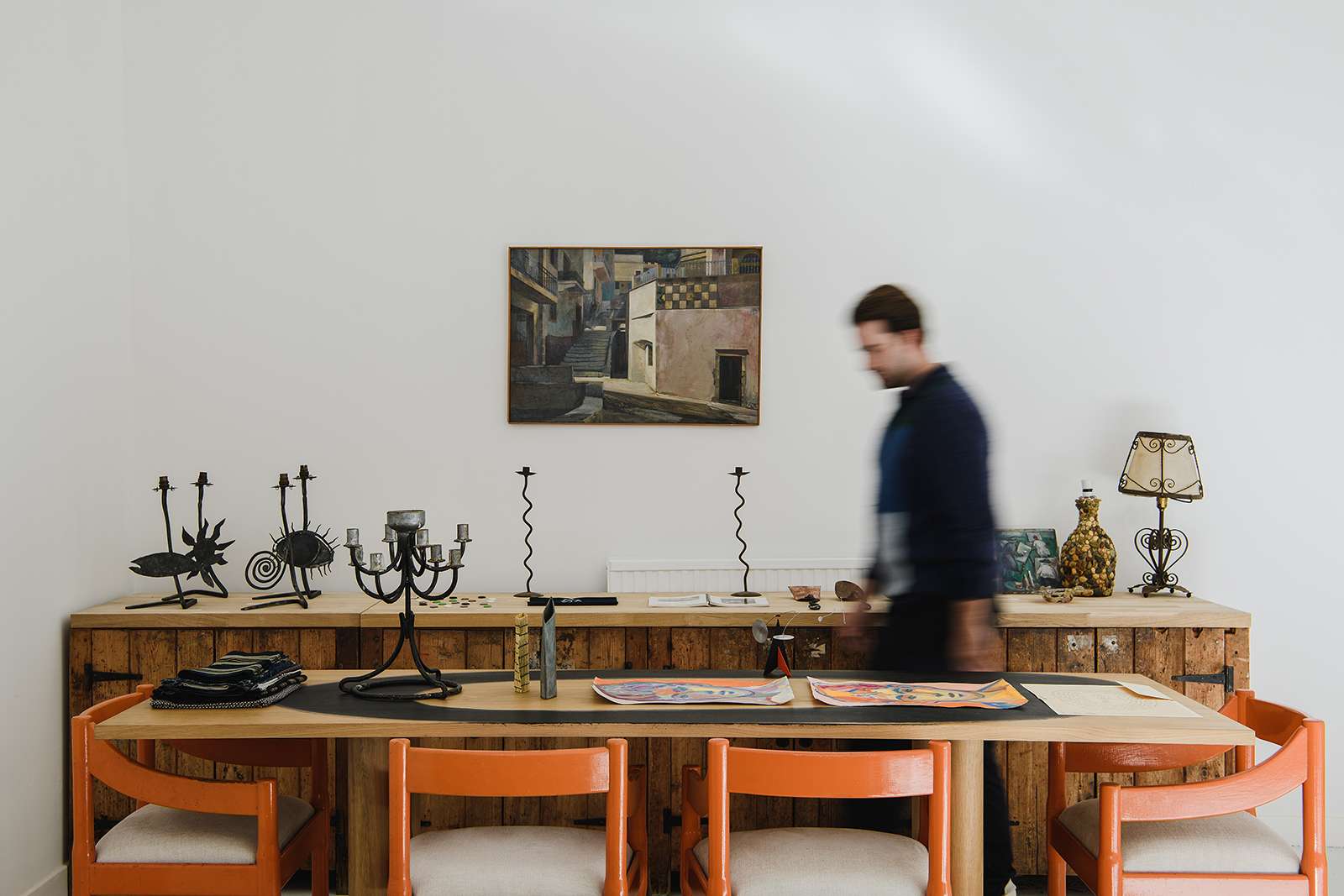
“There is a tension to the images I post. A lot of them, especially the architectural ones, which are usually abandoned spaces, play on the opposing notions of beauty and decay. And then some are even more farfetched. One of the things I love the most is when people interact with the image in the comments. But I do find that the images that I like the most are usually ones that are the least liked, which is interesting.
“Funnily enough, I don’t use Instagram to find imagery. I will read something and then research it from a book, or I use other platforms, like Reddit or just the internet. There’s a lot of online archives. It’s important to me that the images aren’t something you’ve seen before – they’re original in the sense that I haven’t taken them from another Instagram account.
“My aesthetic is not about trying to be the best. It’s not about the rarest, the most unusual, bizarre, oldest, newest. It’s all about the tension between old and new, beautiful and strange – that combination.
“I try to be authentic to my own taste and eye. In a world where you consume so much visually, that’s the only thing you can do – be true to what you think feels nice or looks right. Otherwise, you end up chasing an ideal image, one that’s been manufactured for you by Instagram. It’s funny because Instagram’s the thing that made this all happen, but I hate it and I love it, which aligns once again with what I say about that contrast.
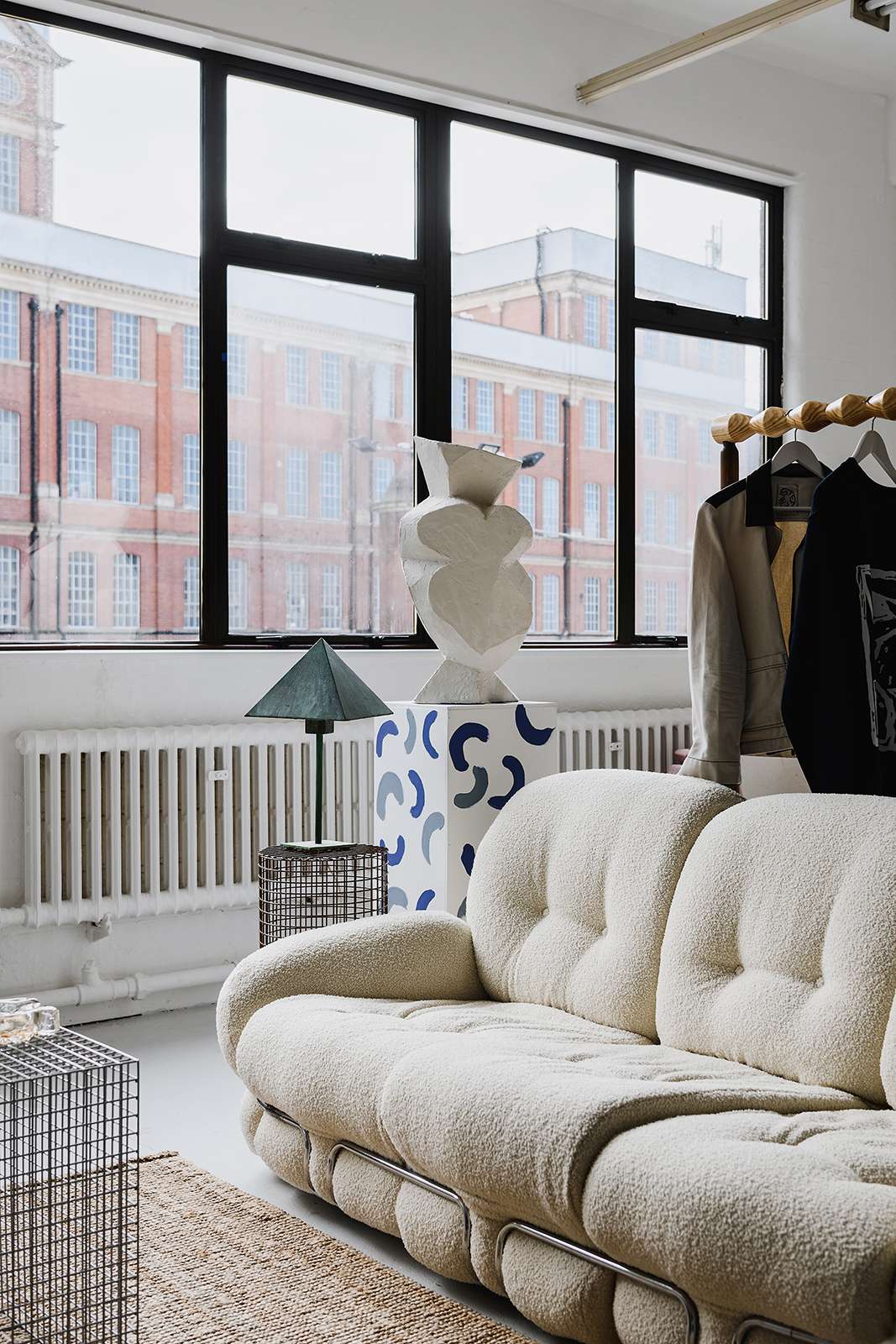
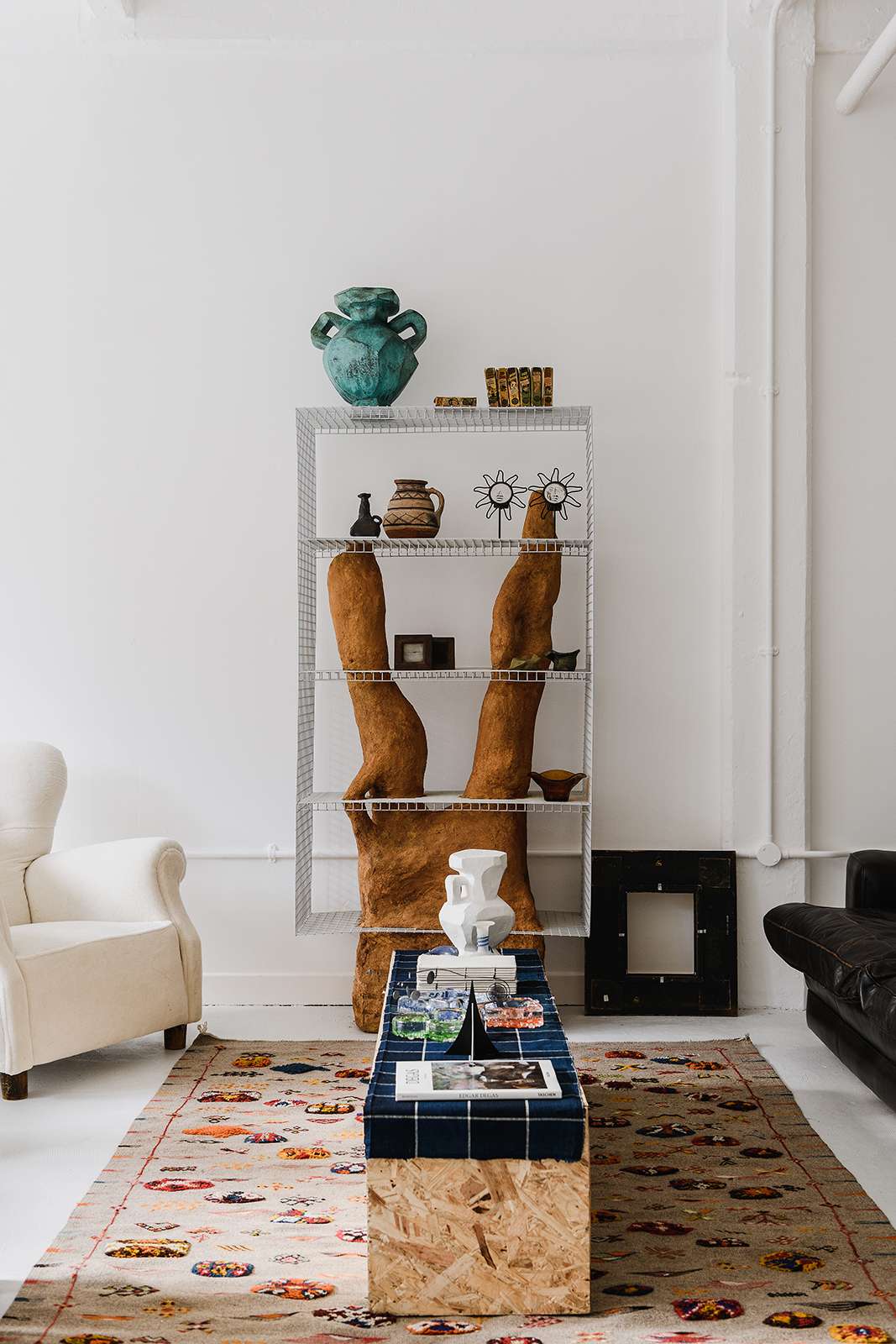
“As a compulsive collector, I do find it hard to let go of things. There are some things in the studio I won’t ever let go of. I wouldn’t let go of the gouged wooden chair. I bought it from Maxime. We had been admiring them and when we came across a pair, we split them up and took one each, which is quite cute. I found the stools and table it sits with separately, but we think they are from the same maker. But no one knows who that is – you can’t work it out. It’s unusual to not be able to trace who’s made something.
“The big white vase is a collaboration between myself and a sculptor named Florian Tomballe from Antwerp, and that was the first prototype. That collection has some of my favourite pieces because it’s about connection and sharing your creative endeavours – they just represent my brand identity. I think, especially doing this kind of job, it can be quite lonely – it’s often just me by myself. Having those little projects where you get to have that friendship with someone is really nice.
“I definitely wasn’t looking for a studio within a safe storage when I came across the space. By chance, I saw that they had some spaces here and when I came to see it, I was blown away by the high ceilings and big south-facing windows. Back then, it had brown carpet and yellow walls. It had been a wood workshop and allegedly the owner hadn’t cleaned it once in 10 years. But the building’s stunning. When the light travels through the space it creates really nice shadows.
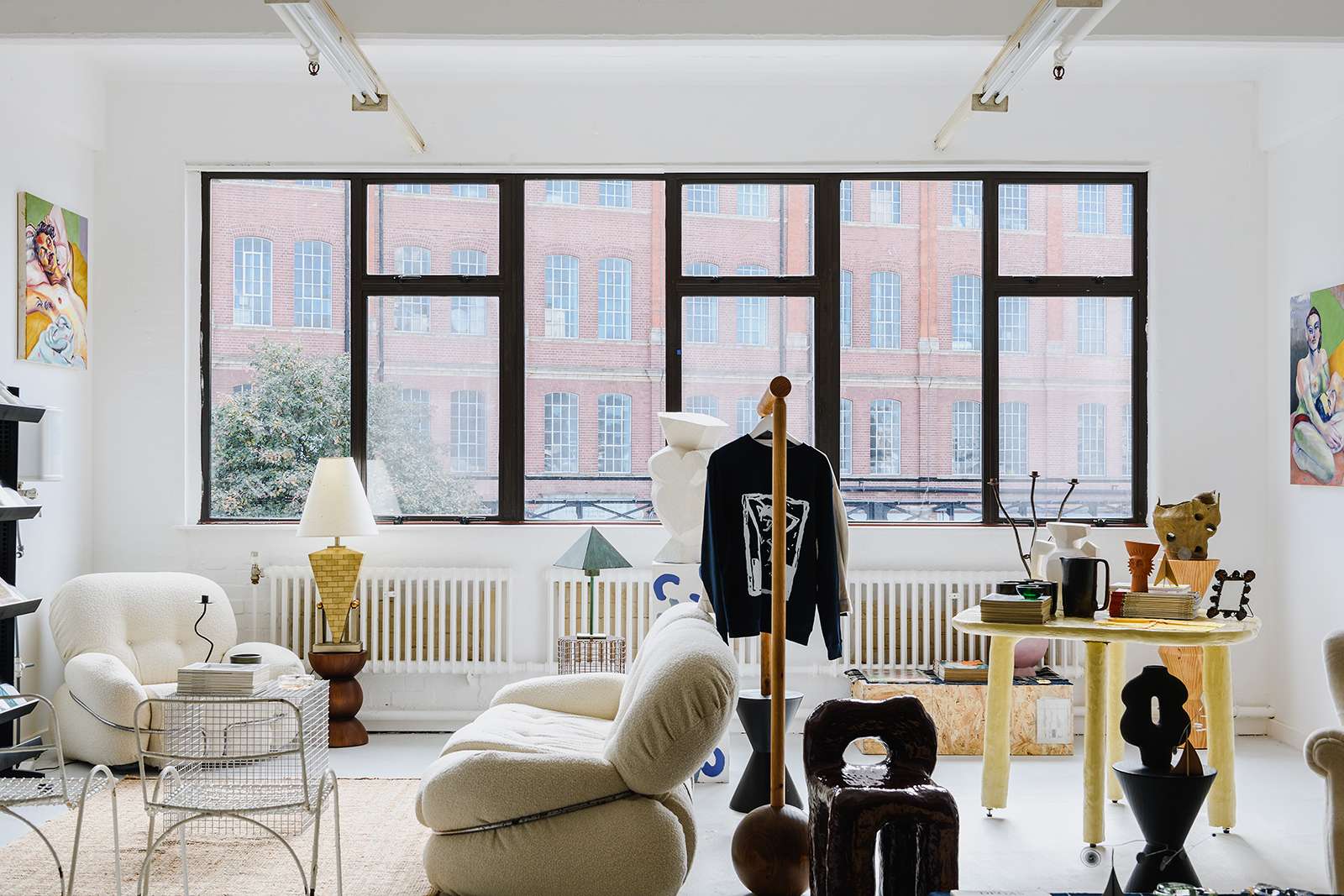
“I’ll usually come here a couple of times a week and I use the space in different ways. It’s very relaxing here. When I’m here, I get so much work done and that’s a motivation for me, just knowing that when I’m within the space, it all starts happening. I usually listen to classical music or things like Max Richter or Yann Tiersen.
“There’s a creative community within the building, which is unexpected. Adam Bentley next door has Antiques Emporium. It’s incredible in there. Then there’s a furniture restorer, there’s printers, framers, plasterwork restorers. My upholsterer is right at the end of the building, which is very convenient.
“I love that from the outside, you’re not ever expecting this in here, even until you get to the door. I’ve had people say, ‘Oh, I felt a bit like I wasn’t really sure what I was coming into.’ It plays on that contrast again.
“My brand is a world; it’s not just about selling a product. You want people to be a part of that. I think there’s something modern about that way of thinking. I don’t have set boundaries to myself of what I’ve necessarily trained in – I studied fashion design and interior design. I’m not scared to try my hand at other things. I think that we’re all individuals, so we all have our own points of view. And if that’s something you want to express, I think why not? Just go for it.”
